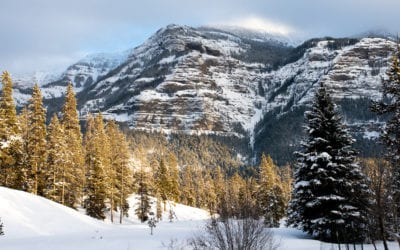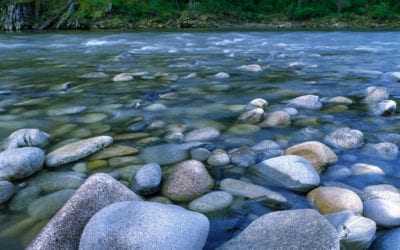Book Review
John Shultis, Book Review Editor
Wilderness Digest
April 2019 | Volume 25, Number 1
SCIENCE, CONSERVATION, AND NATIONAL PARKS
edited by Steven Beissinger, David Ackerly, Holly Doremus, and Gary Machlis. 2017. University of Chicago Press. 416 pp. US $45.00 (pb).

The genesis of this book was the 2015 Science for Parks, Parks for Science conference in celebration of the 2016 centennial of the National Park Service. This history is reflected in the use of both written chapters and several “strategic conversations” that have been transcribed from moderated discussions during the conference.
The relationship between park agencies and scientific research is complex and mutable. Perhaps the current era, with the emerging concepts of post-truth and fake news phenomena, which both lead to decreasing public trust in science, exhibits the greatest challenge to the use of science in park and wilderness management. As Berger cautions, science “is but a single currency, and rarely is it the final arbiter in decision-making” (p. 207).
One theme in this book is the idea that the diverse and sometimes contradictory missions of land management agencies create conflict for these agencies and thus make the use of science more difficult. Thomas Dietz’s chapter also suggests that conflict is created in part by the ever-present battle between altruism (e.g., the need for a commons) versus self-interest (e.g., the focus on private property rights). In many nations, the role of the federal versus regional (e.g., state) control of natural resources development and conservation is also a consistent source of conflict.
A second theme is that contemporary social and ecological change (e.g., climate change) are major disruptive forces for park agencies and their use of science. Indeed, Beissinger and Ackerly state that “change is a constant theme that resonates through most of the contributions in this book – biological, cultural, and technological change” (p. 374). Issues such as climate change are inherently saddled with a high level of uncertainty, which further restricts the integration of science in decision-making. The current lack of meaningful political will to address climate change suggests that the role of science faces a murky, contested future.
Echoing the past and present dominance of natural science in protected area planning and management, most of the chapters in this book focus on ecological sciences, although one of the four sections fully comprises social science topics. The role of the original 1963 Leopold report as well as the 2011 Revisiting Leopold report are discussed in several chapters. The conflict between the original report’s focus on the national parks’ need to reflect a “vignette of primitive America” versus the 2011 report’s suggestion to “steward NPS resources for continuous change that is not yet fully understood” (p. 359) reflects the recent changes in thinking about protected areas.
In sum, this book is a thoughtful, insightful snapshot of the many challenges facing protected area agencies and the constantly changing role of science in helping address these issues. It would be valuable for upper-level college students, conservation scholars, and global practitioners.
Reviewed by JOHN SHULTIS, book review editor of the IJW and associate professor at the University of Northern BC, Canada; email: john.shultis@unbc.ca.
Read Next
Personal Restraint and Responsibility for Protected Areas in Crisis
“How can a society champion the public good in one instance, and yet willfully damage and undermine that same good in another?”
Wilderness Was Not America’s New Idea: Exploring a New Wilderness Stewardship Ideal at the 2018 National Wilderness Workshop
As tribes across the United States seek to regain their sovereignty and access to ancestral lands and ecosystems, we as managers can be visionary and create a management model that extends beyond a seat at the table.
Did #MakeYourSplash Make a Splash?
In 2018, we celebrated the 50th anniversary of the birth of our Wild and Scenic River System. Created in 1968 with only eight rivers, the system has grown to include more than 12,000 miles (19, 312 km) and over 200 protected rivers.



